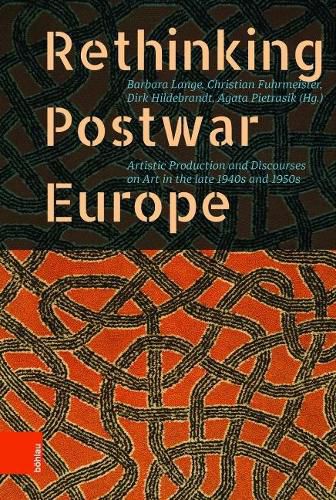Readings Newsletter
Become a Readings Member to make your shopping experience even easier.
Sign in or sign up for free!
You’re not far away from qualifying for FREE standard shipping within Australia
You’ve qualified for FREE standard shipping within Australia
The cart is loading…






This book offers an in-depth insight into the largely unexplored topic of artistic practices in the 1940s and 1950s in Europe which until recently had been obscured by ideologies of the Cold War. Thanks to the authors diverse methodological backgrounds, the volume presents – for the first time – a comprehensive multilayered narrative, focusing on the complexities and entanglements in the artistic field. Instead of assessing the postwar period in the traditional way as divided by the Iron Curtain, the contributions investigate processes of contact, interaction, dissemination, overlapping, and networking. Consequently, the analysis of a diversified European modernism in both its aesthetic and its socio-political dimension resonates with all the different case studies. In particular, the volume looks at how artists developed, designed and (re)negotiated identities and discourses, and sheds new light on the power of art – and creative powers in general – in a postwar setting of mutilations, losses, and devastations.
$9.00 standard shipping within Australia
FREE standard shipping within Australia for orders over $100.00
Express & International shipping calculated at checkout
This book offers an in-depth insight into the largely unexplored topic of artistic practices in the 1940s and 1950s in Europe which until recently had been obscured by ideologies of the Cold War. Thanks to the authors diverse methodological backgrounds, the volume presents – for the first time – a comprehensive multilayered narrative, focusing on the complexities and entanglements in the artistic field. Instead of assessing the postwar period in the traditional way as divided by the Iron Curtain, the contributions investigate processes of contact, interaction, dissemination, overlapping, and networking. Consequently, the analysis of a diversified European modernism in both its aesthetic and its socio-political dimension resonates with all the different case studies. In particular, the volume looks at how artists developed, designed and (re)negotiated identities and discourses, and sheds new light on the power of art – and creative powers in general – in a postwar setting of mutilations, losses, and devastations.